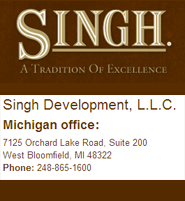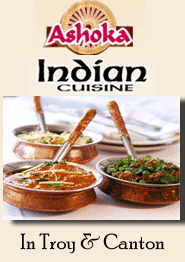|
|
|
|
|
|
Salt Lake City is the capital and the most populous city of the U.S. state of Utah. The name of the city is often shortened to Salt Lake, or its initials, S.L.C. It was originally known as Great Salt Lake City. Salt Lake City has a population of 180,651 as of 2007.[3] The Salt Lake City metropolitan area spans Salt Lake, Summit and Tooele counties, and has a total estimated population of 1,099,973. Salt Lake City is further situated in a larger urban area known as the Wasatch Front and is part of the Salt Lake City-Ogden-Clearfield CSA that has an estimated population of 1,686,703. The total estimated population of the Wasatch Front is approximately 2,150,000.
The city was founded in 1847 by a group of Mormon pioneers led by their prophet, Brigham Young, who fled hostility and violence in the Midwestern United States. They extensively irrigated and cultivated the arid valley and faced persecution from the U.S. government for their practice of polygamy, which was abandoned in 1890. Today, Salt Lake City is still home to the headquarters of The Church of Jesus Christ of Latter-day Saints (also known as the Mormon Church). Mining booms and the construction of the first transcontinental railroad initially brought economic growth, and the city was nicknamed the Crossroads of the West. Salt Lake City has since developed a strong outdoor recreation tourist industry based primarily on skiing. Salt Lake City was host to the 2002 Winter Olympics and is the industrial banking center of the United States.
Before Mormon settlement, the Shoshone, Ute, and Paiute had dwelt in the Salt Lake Valley for thousands of years. However, occupation was seasonal, near streams emptying from Canyons into the Salt Lake Valley. The first US explorer in the Salt Lake area is believed to be Jim Bridger in 1825, although others had been in Utah earlier, some as far north as the nearby Utah Valley. U.S. Army officer John C. Frémont surveyed the Great Salt Lake and the Salt Lake Valley in 1843 and 1845.[5] The Donner party, a group of ill-fated pioneers, had traveled through the Great Salt Lake Valley in August 1846.
The first permanent settlements in the valley date to the arrival of the Latter-day Saints on July 24, 1847. They had traveled beyond the boundaries of the United States seeking an isolated area to practise their religion, away from the hostility they had faced in the East. Upon arrival, President of the Church Brigham Young is recorded as stating, "this is the right place," after seeing the area in a vision. They found the broad valley empty of any human settlement.
Only four days after arriving in the Salt Lake Valley, Brigham Young designated the site for the Salt Lake Temple, intended to be the third temple of The Church of Jesus Christ of Latter-day Saints, to replace the abandoned Kirtland Temple in Ohio and Nauvoo Temple in Illinois.
Constructed on Temple Square, in the center of the city, the temple took 40 years to complete, being started in 1853 and dedicated on April 6, 1893. These delays meant that temples in St. George, Logan and Manti were completed before the Salt Lake Temple [6] The temple has become iconic of the city and is its centerpiece. In fact, the southeast corner of Temple Square is the initial point of reference for the Salt Lake Meridian, and for all addresses in the Salt Lake Valley.
Economy
The modern economy of Salt Lake City is service-oriented. In the past, nearby steel, mining and railroad operations provided a strong source of income with Silver King Coalition Mines, Geneva Steel, Bingham Canyon Mine, and oil refineries. Today the city's major industries are government, trade, transportation, utilities, and professional and business services. The city is known as the "Crossroads of the West" for its central geography in the western United States. As a result, Interstate 15 is a major corridor for freight traffic and the area is host to many regional distribution centers.[citation needed]
Local, state, and federal governments have their largest presence in the city proper itself, and trade, transportation, and utilities also take up a significant portion of employment, with the major employer being the western North America Delta Air Lines hub at Salt Lake City International Airport. Equally significant are the professional and business services, while health services and health educational services also serve as significant areas of employment. Other major employers include the University of Utah, Sinclair Oil Corporation, and The Church of Jesus Christ of Latter-day Saints.
Besides its central offices, the LDS Church owns and operates a profit division, Deseret Management Corporation and its subsidiaries, which are headquartered in the city. Other notable firms headquartered in the city include AlphaGraphics, Sinclair Oil Corporation, Zions Bancorporation, Smith's Food and Drug (owned by national grocer Kroger). Notable firms based in the metropolitan area include Arctic Circle Restaurants, Franklin-Covey, and Overstock.com. Metropolitan Salt Lake was also once the headquarters of Kentucky Fried Chicken (the first ever KFC is located in South Salt Lake), American Stores, the Skaggs Companies, and ZCMI, one of the first-ever department stores; it is currently owned by Federated Department Stores. Former ZCMI stores now operate under the Macy's label. Suburban Salt Lake was also the first location for Sears Grand (at the Jordan Landing shopping center in West Jordan).
Events
Although the city is often stereotyped as a predominantly LDS city, it is culturally and religiously diverse. The city is the location of many cultural activities.[68] A major state holiday is Pioneer Day, July 24, the anniversary of the Mormon pioneers' entry into the Salt Lake Valley. It is celebrated each year with a week's worth of activities, including a children's parade, a horse parade, the featured Days of '47 Parade (one of the largest parades in the United States), a rodeo, and a large fireworks show at Liberty Park.
Salt Lake City has a significant gay population, and the second-largest parade in the city is a gay pride parade, part of the annual Utah Pride Festival held every June.[11]
First Night on New Year's Eve, a celebration emphasizing family-friendly entertainment and activities held at Rice-Eccles Stadium at the University of Utah, culminates with a fireworks display at midnight.
The Greek Festival, held the weekend after Labor Day, celebrates Utah's Greek heritage and is located at the downtown Greek Orthodox Church. The 3-day event includes Greek music, dance groups, Cathedral tours, booths and a large buffet. Attendance ranges from 35,000 - 50,000.
The Utah Arts Festival has been held annually since 1977 with an average attendance of 80,000. About 130 booths are available for visual artists and there are five performance venues for musicians.[69]
Salt Lake City also hosts portions of the Sundance Film Festival. The festival, which is held each year, brings many cultural icons, movie stars, celebrities, and thousands of film buffs to see the largest independent film festival in the United States. The headquarters of the event is in nearby Park City.
Beginning in 2004, Salt Lake City has been the host of the international Salt Lake City Marathon. In 2006 Real Madrid and many of the nation's best cyclist had engagements.[70]
Salt Lake City has begun to host its own events in the last few years, most notably the Friday Night Flicks, free movies in the City's parks, as well as the Mayor's health and fitness awareness program, Salt Lake City Gets Fit.
Salt Lake City was host to the 2002 Winter Olympics. At the time of the 2002 Olympics, Salt Lake City was the most populated area to hold a Winter Olympic games. The event put Salt Lake City in the international spotlight and is regarded by many as being one of the most successful winter olympics ever
Transportation
Salt Lake City's mass transit service is operated by the Utah Transit Authority (UTA) and includes an extensive bus sytem, light rail, and a commuter rail line. The 19-mile (31 km) light rail system, called TRAX, consists of two lines originating downtown, one heading south to Sandy and the other splitting east to the University of Utah. Daily ridership averages 42,500 (as of the first quarter of 2007),[79] significantly above original projections, and is the eleventh-most ridden light rail system in the country, but also the fifth-most ridden system by mile. TRAX began service on December 4, 1999. The University Line opened in 2001 and was extended in 2003 to its current terminus at the University Medical Center. Both lines begin at the Salt Lake City Intermodal Hub downtown; the University Line splits east at 400 South. The system has a total of 28 stations (with 17 of them in Salt Lake City proper), with 13 more currently under construction.
The Salt Lake City Intermodal Hub, near the Gateway District, was opened in 2005. The purpose of the Intermodal Hub is to serve as a central station for national, commuter, and light rail as well as national and local bus services. It is currently occupied by Greyhound; Amtrak is expected to be a future tenant, as well. An extension of the TRAX line from the EnergySolutions Arena through the Gateway District to the Intermodal Hub was completed in April 2008, followed by the opening of the FrontRunner commuter rail line to Ogden on April 26, 2008.[80]
Future TRAX lines to other Salt Lake City suburbs, as well as to the airport, are also planned. A sales tax hike for road improvements, light rail, and commuter rail was approved by voters on November 7, 2006.[81] In addition, $500 million in federal funding has been approved for all four of the planned TRAX extensions in addition to an extension of FrontRunner south to Provo, which broke ground on August 12, 2008.[82] The letter of intent signed with the Federal Transit Administration will allow all of these projects to begin construction in 2008 or 2009.[83] It is expected that all of these projects will be complete by 2014.[84]
UTA also operates an extensive bus system that extends throughout the Wasatch Front from Brigham City in the north to Santaquin in the south and as far west as Grantsville. UTA also operates routes to the ski resorts in Big and Little Cottonwood Canyons during the ski season (typically November to April). Approximately 60,000 people ride the bus daily, although ridership has reportedly declined since TRAX was constructed.[85]
Salt Lake City International Airport is located approximately 4 mi (6 km) west of downtown. Delta Air Lines operates its second largest hub at the airport, serving over 100 non-stop destinations throughout the United States, Mexico, and Canada. Daily non-stop service to Paris, France began in June 2008. SkyWest operates its largest hub at the airport as Delta Connection, and serves 243 cities as Delta Connection and United Express. The airport is served by 4 UTA bus routes, and plans are in the works for a future light rail route. Ute Cab, City Cab, and Yellow Cab are the major taxi services, and Express Shuttle is a major shuttle company servicing the city and metro area. A total of 22,029,488 passengers flew through Salt Lake City International Airport in 2007, representing a 2.19 % increase over 2006.[86] The airport currently ranks as the twenty second busiest airport in the United States in terms of total passengers
|
|
|




|
|
|
|
|